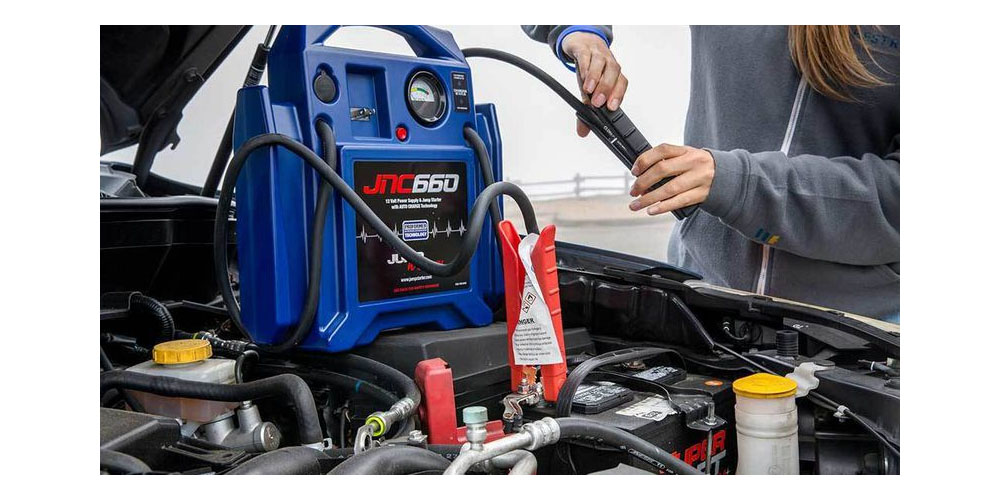Although it might seem like a simple procedure to use the Jump-N-Carry jump box, many things can go wrong. Most people forget the fundamentals of operating the JNC jump box and other electronic devices. What’s worse is a lot of users ignore and fail to read the user manual, which plays a vital role in using jump starters.
Usually, many people tend to forget short-circuiting in electronic devices and the fatal damage it causes. Knowing the critical safety measures will protect you from damage and unwarranted accidents.
Critical Elements of a Jump-N-Carry Jump Box
The most important thing you need to know about a jump starter is that it operates with voltage and electricity. It has an in-built charger which requires charging from time to time. The electric charge for JNC ranges from 300-1700 amperes, which is a pretty high voltage.
The voltage is always a constant 12 Volts, although one version of this brand contains 24 Volts. All jump starters include lithium which enables them to function correctly. The JNC brand provides coating and great packaging, decreasing the chances of damage.
Safety Procedures to Take When Using a JNC Jump Box
You should be keen on safety measures on both the battery unit and the terminals. Your storage and transportation aspect are also among the steps you need to take to ensure the jump starter is secure.
Terminal Safety
Although the company already cushions both the negative and positive terminals, it does not guarantee total safety.
- You should package your battery in tight, comfortable places to avoid damaging the caps, especially during transportation. When the packaging is loose, the cable wires may shift, which will cause damage and possible short-circuiting.
- Adding additional outer layers to the terminal wires is another safety measure.
Battery Short Circuiting Protection
These steps apply to the batter part of the jump starter.
- The temperature of your jump starter should neither be too high nor low. Storing it in extremely low temperatures damages the battery. A temperature of 10-20 degrees keeps the starters secure.
- Overload protection protects the battery unit from receiving too much current beyond the manufacturer’s specifications when charging. The extra power may come from the main switch, which will receive more than needed.
- The JNC jump starters have a safety feature that immediately stops charging once the battery is full. The voltage supplied through the current is just enough and, if exceeded, can bring a lot of damage.
- The current supplied from the charger should also be just enough to prevent electrocution. Although starter manufacturers include this during production, you should always countercheck whether the current supply fits your car engine.
Conclusion
For a Jump-N-Carry jump box, most of these safety procedures are already catered for by the company. However, it is essential also to do your part and ensure added safety to prevent future accidents. It would be best if you emphasized measures such as storage and transportation since you are solely responsible for your safety after purchasing.
